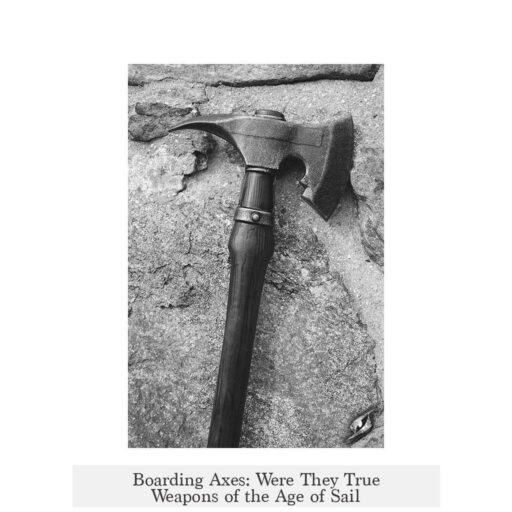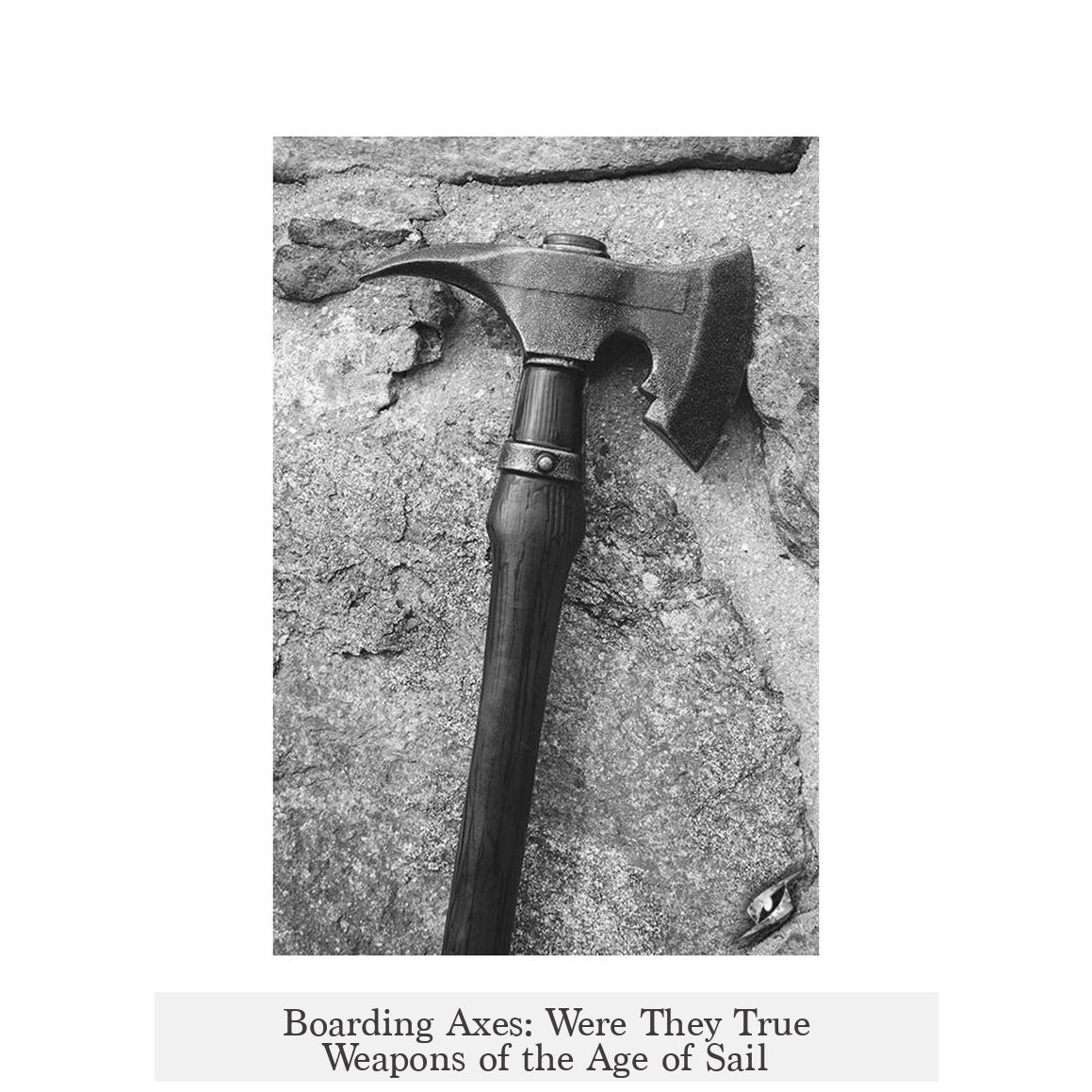Boarding axes were indeed actual weapons in the age of sail, used both as practical tools and as secondary weapons during naval combat and boarding actions.
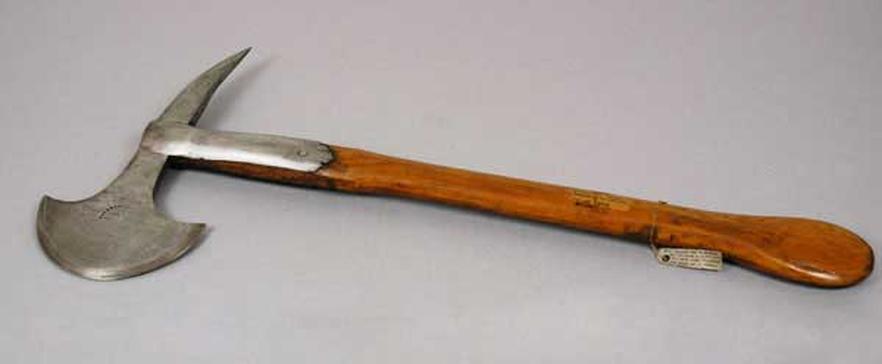
Primarily, boarding axes served multiple practical purposes aboard sailing ships. They were essential for cutting ropes and rigging swiftly. The design mirrored modern fireman’s axes, typically smaller and one-handed, making them suitable for quickly reaching and dousing fires, either accidental or those ignited during battle. Carpenters aboard ships also used these axes to trim barrel staves and perform other maintenance tasks, highlighting their versatile utility beyond combat.
In the heat of naval warfare, especially during boarding actions, these axes earned their name and reputation. They were invaluable for cutting enemy rigging and anti-boarding nets, forcing open doors, windows, or barricaded bulkheads. Sailors used boarding axes to sever grappling lines, preventing the enemy from boarding their own ship. While not the primary weapon, boarding axes served effectively as backup weapons. Their compact size made them easy to carry, often in belts, allowing sailors to wield them alongside primary weapons like cutlasses.
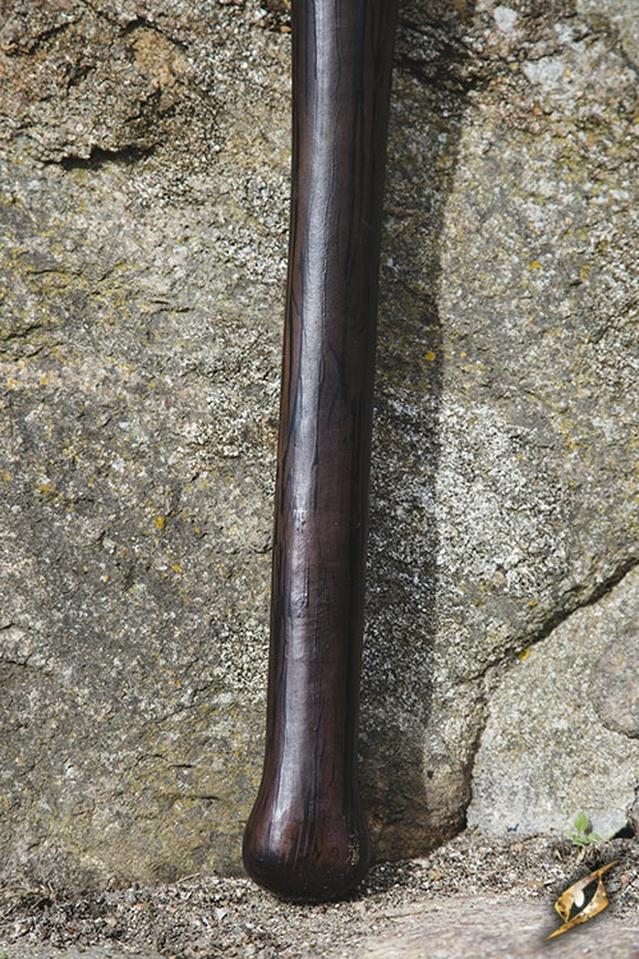
Though broadside gunfire and cutlasses were dominant in close combat, boarding axes provided tactical advantages. In chaotic boarding melees, a well-placed strike to an opponent’s head or using the axe in conjunction with a cutlass to block attacks proved useful. Their design included a hooked or spiked back, which also aided sailors in climbing or grappling during boarding.
Weapons selection aboard ships included a range of armaments. Pirates and sailors often carried multiple backup weapons due to the risk of losing their main weapon in hand-to-hand combat. Axes were popular because of their balance between utility and lethality. Historical accounts and fictional but contemporary literature frequently mention boarding axes alongside pistols, cutlasses, muskets, and even hand grenades in lists of weapons carried by armed sailors.
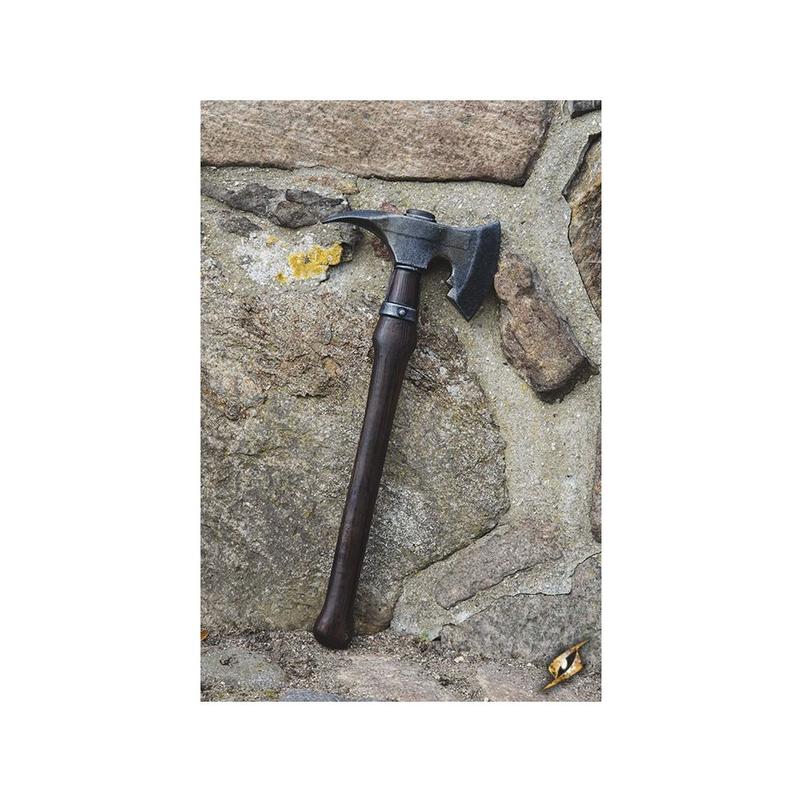
Mutineers and those involved in internal ship conflicts particularly favored boarding axes as lethal weapons. Axes excelled in confined quarters below decks, where quick, decisive strikes were needed. Unlike more conspicuous swords, boarding axes resembled everyday tools, granting mutineers the element of surprise. Notable historical mutinies illustrate brutal killings carried out using axes. This preference arose partly because mutineers lacked access to official arsenals but had ready access to shipboard tools like axes. Recorded mutinies in the early 17th to 19th centuries describe axes being used to kill captains and break the heads or skulls of officers.
The preference for boarding axes in mutinies also hinged on their relative ease of concealment and ready accessibility. Other tools such as hammers, adzes (a similar tool with a cutting blade), and marlinspikes served similar roles. Mutineers often used ruses to conceal their deadly intent, appearing to carry tools for normal ship duties before using them as weapons.
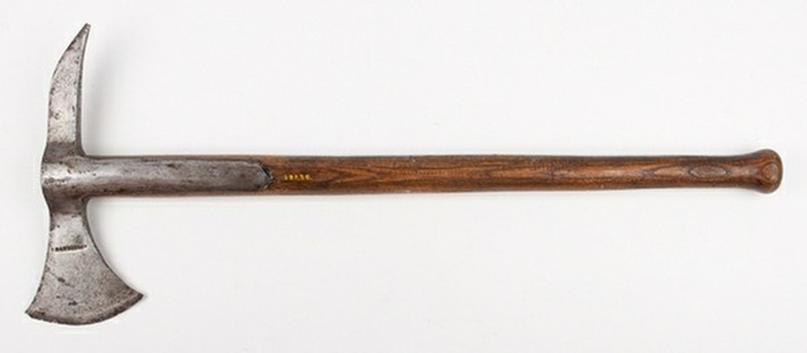
| Aspect | Description |
|---|---|
| Primary Role | Tool for cutting rope, rigging, carpentry, and fighting fires aboard ship |
| Combat Role | Secondary weapon during boarding actions for cutting nets, grapnels, and close quarters combat |
| Mutiny Usage | Preferred weapon for mutineers due to lethality in close spaces and accessibility |
| Design | One-handed axe with cutting blade and hooked/spiked back, similar to fireman’s axe |
| Famous Associations | Used by pirates, sailors, and mutineers; historical mutinies documented use of axes |
In conclusion, boarding axes in the age of sail were authentic weapons backed by practical functionality. Their utility extended from everyday shipboard tasks to capturing or defending vessels during boarding. They also played a deadly role during mutinies, favored for their lethality and accessibility in confined spaces.
- Boarding axes served dual roles: practical tools and secondary weapons.
- Essential for cutting rigging, fighting fires, and facilitating boarding maneuvers.
- Not primary weapons but effective in chaotic close combat and in tandem with cutlasses.
- Mutineers preferred axes for killing in confined ship spaces due to accessibility and surprise.
- Historical records confirm widespread use by pirates, sailors, and mutineers alike.
Were Boarding Axes Actual Weapons in the Age of Sail?
Yes, boarding axes were genuinely used as weapons in the Age of Sail, but calling them merely “weapons” misses the full story. They were multi-purpose tools essential for sailors, serving as both practical implements and effective backup weapons in naval combat.
When you imagine a ship battle from the Age of Sail, what comes to mind? Cutlasses flashing, muskets firing, and perhaps a cannonball tearing a hole in the hull. But what about the humble boarding axe—was it truly a frontline weapon, or just a handy tool sailors grabbed along the way? Let’s dive into the salty details to understand the real story behind boarding axes.
The All-Around Shipmate: Primary Use of Boarding Axes
To call boarding axes just weapons is like calling a Swiss Army knife simply a blade—it’s an understatement. According to historian Gibson (p.127) and martial artist Matt Easton, the primary reasons ships carried boarding axes were practical. These axes cut ropes in seconds, sliced rigging holding sails, and pried open stubborn hatches. The back spike of an axe served as a potent lever, ideal for jimmies or adjusting barrel staves. Sailors even used them like fireman’s axes, heavy-duty tools for chopping wood and breaking through obstacles during urgent shipboard emergencies. Fires, whether caused by accident or enemy cannonballs, demanded fast access. Boarding axes cleared paths swiftly and efficiently.
This versatility means boarding axes were prized not just for combat but as essential maintenance and emergency tools—held in high regard by any sailor worth his salt.
Axes in the Heat of Boarding Actions
So where does the weapon bit come in? Boarding actions—the chaotic, up-close-and-personal fights when sailors stormed enemy vessels—lent the axes a combat role. As Little notes, boarding axes earned their name here, useful for cutting enemy rigging and anti-boarding nets designed to slow attackers. Their spike and blade crushed doors, smashed through quarterdeck bulkheads, and unclipped grappling lines to prevent or enable boarding.
That said, axes weren’t the “primary” weapon. Cutlasses remained king in one-on-one fights. But boarding axes became handy sidearms. Picture a brawl on narrow decks: the cutlass swings with style, but the boarding axe delivers brutal, sometimes surprising, blows—especially to opponents distracted or facing multiple foes.
Using an axe in tandem with a cutlass also helped block attacks. The spike could hook or parry, adding a layer of defense. It’s far from a clean duel; boarding fights were messy, chaotic, and anything that worked earned respect.
Why Carry Backup Weapons? Axes Fill the Gap
Pirates and sailors didn’t trust fate to one sword. You’d be daft to rely on only a cutlass, which might be lost, broken, or dropped in the frenzy. Boarding axes offered an easy-to-carry, quick-access backup. They fit snugly into a belt, lighter and smaller than swords, making them convenient for the throng.
In fact, axes likely influenced the design of tomahawks, which traveled from nautical tools to Native American weapons. Pirates famously loaded up on multiple pistols, and axes made a practical addition to this arsenal. The stories of female pirates like Anne Bonny and Mary Read sporting axes in their belts, while romantic, hint at their functional use. They were not mere props but real gear for real fights.
Daniel Defoe’s 1719 sequel to Robinson Crusoe mentions boarding parties heavily armed with muskets, pistols, cutlasses, and boarding axes (or pole-axes, as he called them). This fictional account aligns with historical armament lists, making it a useful lens on the era’s reality.
Mutinies Made Better (or Worse) by Axes
Mutiny: it’s the word that makes captains sweat and crews shiver. Interestingly, boarding axes shone here too—often as preferred weapons of mutineers. Why? Axes excelled in close quarters below decks. Unlike cutlasses, their heavy sharp edge and spike could deal deadly damage quickly in cramped, dim spaces.
Historical accounts highlight this grim reality. In 1629, a band of mutineers was ordered to bring axes and adzes—a similar cutting tool—“as they could use them better to strike amongst a crowd in the tent” (Pelsaert, p.187). Later, in 1824, aboard the whaleship Globe, mutineer Samuel Comstock wielded a one-handed boarding axe with deadly effectiveness, decapitating the captain and obliterating an officer’s skull (Gibson, p.127).
In 1721, pirate Philip Roche’s mutiny involved “beating the brains out” of crew members below deck, presumably with axes (Johnson, p.374). Axes offered brutal, decisive strikes when sudden violence required quick results.
Their appeal to mutineers also stemmed from practicality. Without access to ship arsenals stocked with swords or pistols, mutineers often used tools lying around. Axes disguised as ordinary ship implements could sneak up on victims. This gave them a deadly and often unexpected edge—perfect for murder in the shadows.
The mutiny aboard John Phillips’ pirate crew in 1724 illustrates this cleverness. Carpenter and mutineers used work tools to conceal intent. One mutineer pulled his axe from the tool chest with a casual wink before suddenly attacking. When another victim tried to cling to the ship’s side, he chopped off the hand with his boarding axe, sending him to a watery grave (Johnson, pp. 349, 608; Filmore, p.367).
So, Were Boarding Axes Real Weapons? The Verdict
To summarize: boarding axes were more than tools, less than primary weapons, but deadly nonetheless. They filled the gap between everyday utility and deadly combat roles. Axes were versatile, easy to carry, and, in the chaos of naval boarding or mutiny, effective for killing or disabling foes.
Imagine being a sailor on a creaking wooden deck, grappling with an enemy, the air thick with smoke, splinters, and screams. Your cutlass swings wide, but your boarding axe is close by, ready to smash a board, cut a rope, or deliver a crushing blow to an attacker’s skull.
Boards and axes weren’t the fanciest weapons in the Age of Sail, but their indispensable nature made them perfect companions for the sailor heading into battle. They were the unsung multi-taskers of the ship—at once firefighter, carpenter, and deadly fighter.
Quick Tips for History Buffs and Reenactors
- Remember axes had dual roles: they were tools first, weapons second.
- When portraying boarding actions, don’t overstate the prominence of boarding axes as frontline weapons; they complemented swords and pistols.
- Mutiny scenes benefit greatly from including boarding axes, highlighting their brutal effectiveness in confined spaces.
- For cosplay or reenactment, a one-handed fireman’s axe is a close modern equivalent to a boarding axe.
- Consider the practicality of carrying an axe—light, small, and easily accessible, unlike heavier swords.
Final Thought
Were boarding axes actual weapons? Absolutely. But calling them just weapons ignores their real charm—versatility. The Age of Sail demanded tools that could do many jobs. Boarding axes stepped in, swinging on the edge of utility and lethality. They are perfect examples of how sailors adapted every inch of their gear to survive harsh seas and even harsher battles.
And if you ever find yourself on a wooden ship facing an angry pirate, maybe you’ll appreciate the boarding axe—not just for the fight, but for cutting through that stubborn rope holding your fate.
